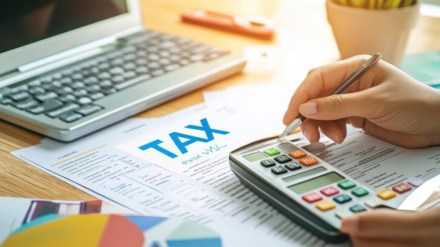By Shalini Jain
Equity compensation has become a key component of employee remuneration in the startup and tech ecosystem. A disciplined year-end review can help employees avoid surprises, optimise taxes, and plan liquidity. Employee Stock Option Plans (ESOPs) are taxed at two different points: On exercise of vested options as a perquisite and on sale of shares as capital gains.
On exercise of vested options
When an employee exercises vested options and receives shares from the employer, the difference between the Fair Market Value (FMV) of the share on the date of exercise and the exercise price is taxed as a perquisite under the head ‘Salary’.
The tax on such perquisite is withheld by the employer via payroll as withholding taxes (TDS). Even if TDS is deducted correctly on the perquisite, sometimes the overall tax payable based on total income may be higher, especially where surcharge thresholds are crossed.
On sale of shares
When an employee eventually sells the shares, the gain is taxed as capital gains, determined based on: sale price, and the FMV on the exercise date. The rate depends on whether the gain is short-term or long-term, based on the holding period of the shares.
Year-end review: Why it matters
A year-end review is essential because equity compensation can significantly alter an individual’s tax position.
Review vested and exercised options. Examine how many options vested during the year, how many were exercised, the FMV on exercise date, perquisite income generated and TDS on such perquisite deducted by the employer.
If the TDS is insufficient to cover the full tax liability, compute the difference and pay advance tax before March 31.
How to optimise capital gains
Long term capital gains (LTCG) tax rates are significantly lower than short term capital gains (STCG) tax rates, making holding for the long term advantageous, provided liquidity and risk tolerance permit. Employees should evaluate when the shares were acquired, how long they need to hold to benefit from lower LTCG rates and whether upcoming liquidity events (IPO, buyback, secondary sale) are expected. This can help unlock significantly higher post-tax gains from ESOPs.
Need for advance tax
TDS may not always cover the employee’s full tax liability. This may happen as employers compute TDS only on the salary (including ESOP perquisite) and may not have visibility into the employee’s total income. As a result, the actual tax payable at the end of the year may be higher than the TDS deducted, and individuals may need to pay advance tax to bridge the shortfall and avoid interest.
The writer is partner, People Advisory Services, Tax, EY India. Inputs from Vijayalakshmi PG, director, People Advisory Services – Tax, EY India
